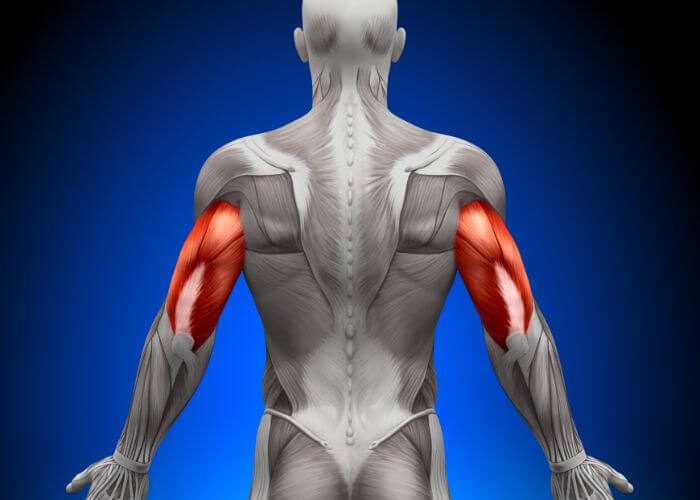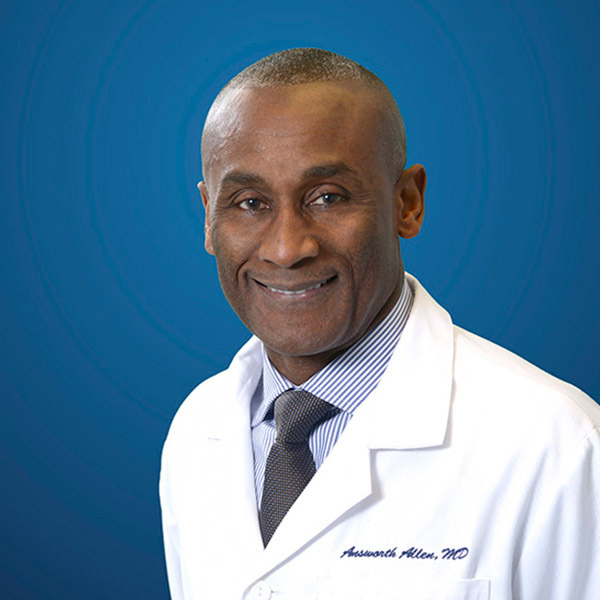What is a distal triceps tendon tear?
The triceps is a muscle that travels along the posterior (back) upper arm and has three “heads” as its name suggests. The long head of the triceps muscle originates at the scapula (shoulder blade) and the medial and lateral heads of the triceps muscle begin at the proximal end of the humerus (upper arm bone), closest to the scapula. These three muscle “heads” adjoin with each other at the elbow and attach to the olecranon, the bony prominence of the elbow. This arrangement forms one of the strongest tendons in the body that plays an important role in stabilizing and straightening the elbow. A distal triceps tendon tear occurs when the tendon becomes partially separated from its attachment site on the olecranon, while a tendon rupture is the complete detachment of the distal triceps tendon. A distal triceps tendon rupture is a remarkably uncommon event as a substantial force directly onto the elbow is necessary to cause a complete detachment. Participants in high-impact sports such as football and weight-lifting are most at risk of experiencing a triceps tendon rupture, but this injury can also be the result of a work-related incident. Dr. Answorth A. Allen, orthopedic elbow specialist serving patients in Manhattan, New York City, Westchester, Long Island and surrounding areas, has the knowledge and understanding, as well as substantial experience in treating patients who have experienced a distal triceps tendon tear.

What are the symptoms of a distal triceps tendon tear?
A sharp and sudden pain at the elbow occurring immediately following an injury is a common complaint of a distal triceps tendon tear. Occasionally a defect can be palpated along the olecranon with a tendon rupture. Other symptoms include:
- Hearing or feeling a “pop” with the tendon tear
- Swelling and bruising along the back of the elbow and upper arm
- Unable to fully straighten the elbow against resistance
How is a distal triceps tendon tear diagnosed?
If a distal triceps tendon rupture is suspected, prompt medical attention is highly encouraged as the surgical repair is time-sensitive. Dr. Allen can diagnose a distal triceps tendon tear after obtaining a comprehensive medical history, including mechanism of injury, and a thorough physical examination. Diagnostic imaging such as x-rays and magnetic resonance imaging (MRI) may be necessary to identify damage to any other structures within the elbow joint.
What is the treatment for a distal triceps tendon tear?
Non-surgical treatment:
Patients that have experienced a partial distal triceps tendon tear, or the tear is chronic in nature, may prefer conservative treatment only. A temporary splint or brace may be applied to immobilize the elbow while the injury is healing. A combination of rest, ice, and non-steroidal anti-inflammatory medications can be used for pain management. Non-surgical treatment of a partial distal triceps tendon tear can result in persistent pain and weakness of the upper arm and ultimately require surgical intervention. A consultation with a top orthopedic elbow specialist, such as Dr. Allen, is important for help in the decision-making process.
Surgical treatment:
In the event of a distal triceps tendon rupture, surgical intervention is recommended within 2-3 weeks of the injury to prevent scar tissue from shortening the damaged tendon. Dr. Allen can repair a distal triceps tendon rupture through one of two surgical methods: 1) fastening the torn tendon with specialized surgical anchors that are secured within the ulna bone; or, 2) passing the torn tendon through a tunnel in the ulna bone and fastening with specialized surgical anchors. The small incisions utilized with either approach allow for a faster recovery time for patients to return to their normal activities.
Triceps Tendon Specialist

Do you participate in high-impact sports or weight lifting? Athletes that participate in these types of activities are at an increase risk of developing a triceps tendon tears. Damage to this tendon can cause pain, swelling, and an inability to fully straighten the elbow. Complex elbow specialist Doctor Answorth Allen provides diagnosis and treatment for patients in Manhattan, New York City, Westchester, Long Island and surrounding areas who have experienced a recent elbow injury. Contact Dr. Allen’s team today!






